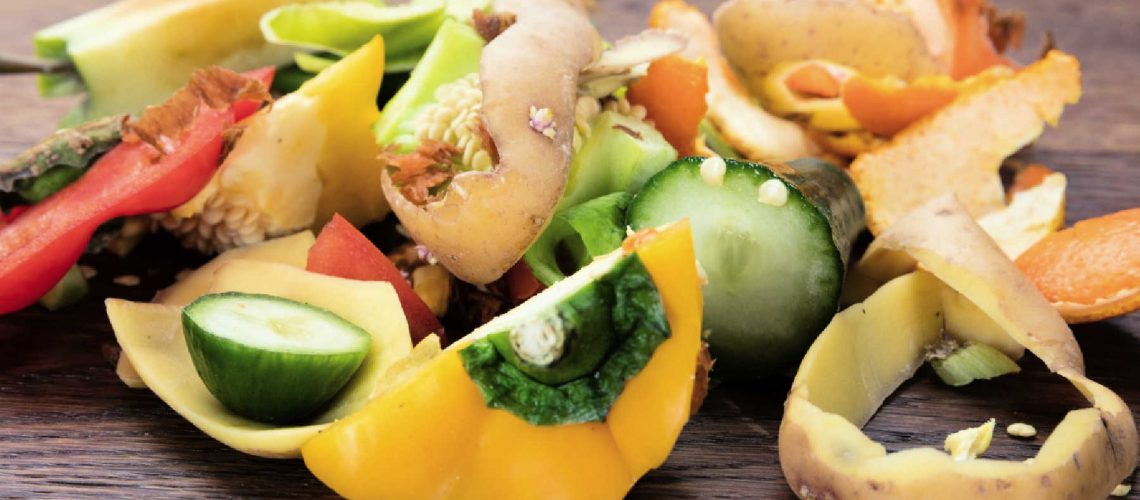When you’re next standing at the kitchen bench chopping up your vegetables, or slicing up your fruit, take note of what you’re discarding. All those tops, tails, peels, stems, and seeds are tossed aside as worthless commodities. We are lucky here in Lake Macquarie because our council has taken steps to reduce food waste. Our kitchen green bins are perfect for recycling our unwanted food into garden waste. However, what if you could save money using your vegetable, herb and fruit scraps?
Did you know, Australians discard up to 20% of the food we purchase? It equates to around $1000 a year for each of us. In total, it’s valued at over $8 billion. The fresh food waste, like our fruit and vegetables, equates to 33% of this. So, we’ve been looking at ways to save our scraps and turn them into valuable extras in our meals.1
1. Zucchini, tomato & carrot ends
All three of these vegetables can be added to your cooking just the same as the rest. Add tomato ends to your tomato sauce for pizza bases, spaghetti, or even tomato soup! Pop your carrot tops and tails into stocks, soups, and salads. Your zucchini and carrot ends can be added to soups and stir-fries. Why not try carrot top pesto? Carrot Tops Pesto.
2. Carrot, potato, sweet potato peel
If you haven’t tried fried potato peels before you need to have a go. I found a recipe that’s to die for. Check this out: Fried Potato Peels. Another awesome crisp is the sweet potato skin. It’s a little sweeter so you’ll taste the sweet and salty flavour. Here’s another recipe to try: Crispy Sweet Potato Skins. You can also make carrot peel crisps, or add them to your stock or smoothie, toss them into a stir fry or make a carrot peel pesto.
3. Onion & garlic skin
Onion skins are awesome in soups and slow cookers because they retain the onion flavour. You can even boil the skins for 20 min to make infused water, which is believed to help with leg cramps. Remove the skins after boiling and drink before bedtime. Onion and garlic skins can be added as extra nutrition to soups, stews, and when making stock or bone broth. Strain the skins out after your stock is infused.
4. Brocolli & cauliflower stems
We add stems to all our dishes and keep the heads for the 3 veggies and meat plates. These include spaghetti sauce, stir-fries, soups, and casseroles. They also make the perfect extra in vegetable soup, and if you’re into fermented veggies, stems can be pickled! Broccoli and cauliflower stalks are as nutritious as the florets, both low in calories and high in fibre. Have you tried broccoli & cauliflower rice? All you have to do is whizz up the stems into the rice grain size and fry in a saucepan with coconut oil then season. Delish!
5. Banana skins
We toss it away without a thought, but banana skins are full of B-group vitamins, potassium and magnesium. They can be used in smoothies, cooked in cakes or even pickled. Just make sure you’re eating organic bananas. How about trying banana peel bacon? Sounds interesting right? It’s a vegan version of bacon. Check it out here: Banana Peel Bacon. I think banana peel stir fry is more my thing, especially with chilli: Banana Peel Stir Fry
6. Mandarin, orange & lemon skin
Citrus skin has many uses around the house, especially in the kitchen. You can infuse lemon peel in your tea, and add it to a chicken cavity when roasting, or in water for extra flavour. You can make the most delicious jam or marmalade from citrus peel. Lemon skin can also be made into lemon sugar or herbed lemon butter. Use citrus peel around the house as well. People place dry skin in wardrobes to scare off moths, use it to freshen up their fridge, sanitise a cutting board or add white vinegar for a cleaning remedy. It’s used as a cleaner in the bathroom to make it shine and smell amazing.
7. Stalks from your herbs
We’re all guilty of discarding our stalks, but they can also be used. Chop up your stalks just like you do the herbs and add them to stocks, soups, spaghetti bolognese or stews. I also love herb-infused oil and vinegar. You can also blend them to make pesto or add them to marinade. Maybe try making herb-infused oil for body care. Now that sounds interesting.
8. Cores from apples & pears
The core of your pears and apples can go in with the rest of the fruit when you’re making jam or if you’re making apple cider vinegar. You can even literally eat the core when you’re having a fruit break. I know my kids demolish it right down to almost nothing. Pop the cores in your smoothies as well before you hit the button. There’s no need to waste anything.
9. Pineapple core
Use the core of pineapple in vegetable, chicken or fish stock to add a hint of sweetness. Another tasty idea is to use it as a stuffing for a roast chicken, yum! Try a flavoursome iced tea or lemonade, and you can use it in a jam recipe because it acts as natural pectin. Pineapple cores are very nutritious so make sure your smoothie or fresh juice doesn’t miss out on any goodness.
10. Pumpkin seeds
There’s nothing like finishing with a delicious garnish or tasty snack. Pumpkin seeds are very nutritious and taste amazing. There are so many ways you can flavour them as well. You first need to wash and dry them. If you soak them in warm water, the seeds will float and the remaining pumpkin flesh will sink. The pepita is inside the shell but you can simply crunch down and eat the shell as well. Flavour them up with some herbs and seasoning. How to roast pumpkin seeds six ways.
Keep leftovers fresh longer
To keep vegetable scraps, fruit and herb off-cuts fresh, you can blanch or freeze them to cook later. Try pickling techniques for preserving your extras.
Making the most of your scraps is much easier than you think. You can also invest in a worm farm or compost bin to enrich your soil. Be mindful that citrus, tomatoes and onions can’t be used with worms. However, you can now use them in your kitchen or home.
Working towards zero waste not only helps reduce waste and processing, but it will also help you spend less and discover some new recipes and uses to try at home.
References:
- Foodwise: Food Waste Fast Facts {Accessed 31/7/20}












